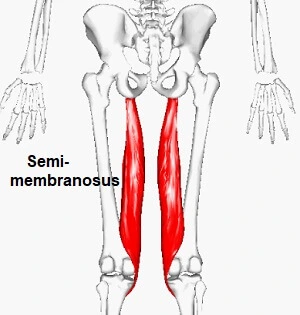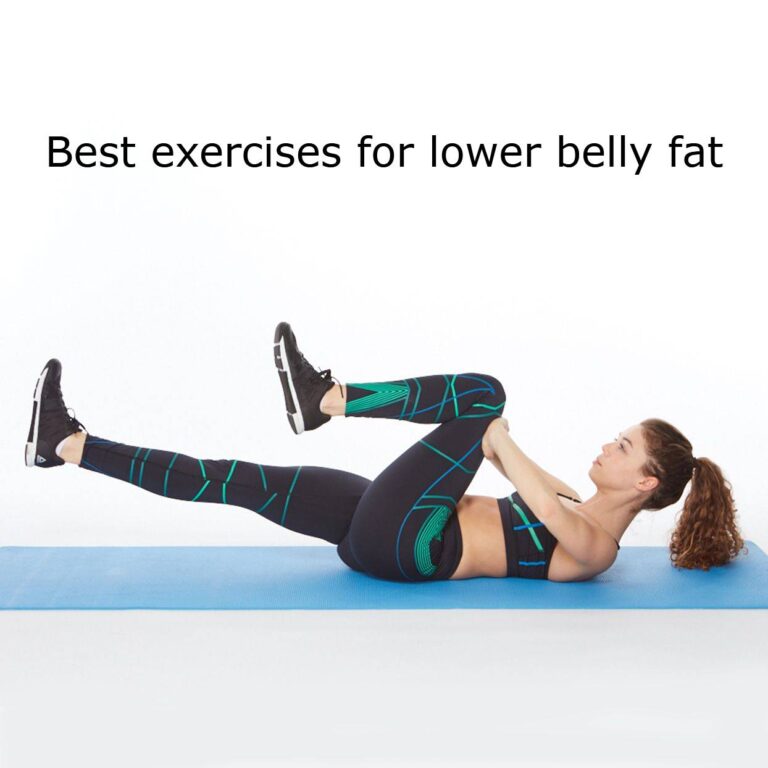Neck exercises
Table of Contents
Introduction
Neck exercises are a great way to make your Neck fully functional, powerful, and flexible. Neck exercise has many health benefits and reduces the risk of injury.
- Neck muscle exercise increases the strength of the neck muscle, It helps to improve the range of motion of the neck. It helps to boost your neck muscles. It helps to strengthen your upper back muscles. It helps to improve your posture. It helps to stabilize your neck. It helps to stabilize the upper back. It helps to decrease the strain on your neck and shoulder muscles. It helps release tension and stiffness. It also helps you to carry objects overhead.
- The neck muscle is the muscle that covers the area of the neck. The neck muscles are mainly responsible for the movement of the head in all directions. They consist of 3 main groups of muscles: anterior, lateral, and posterior groups, based on their position in the neck. The musculature of the neck is further divided into more specific groups based on the number of determinants; including depth, precise location, and function.
- The position of the muscle or group of muscles in the neck generally relates to the function of the muscles. For example, the muscles in the posterior part of the neck are responsible for the extension of the neck. The muscles of the neck are closely related to the number of important structures that pass between the thorax and the head, including major blood vessels, nerves, and elements of the respiratory and gastrointestinal systems.
- Neck muscle exercise includes two types of exercise
- Strengthening exercise
- Stretching exercise
Health benefits of the neck muscle exercise
- Neck muscle exercise increases the strength of the neck muscle
- It helps to improve the range of motion of the neck
- It helps to boost your neck muscles
- It helps to strengthen your upper back muscles.
- It helps to improve your posture.
- It helps to stabilize your neck
- It helps to stabilize the upper back
- It helps to decrease the strain on your neck and shoulder muscles
- It helps to relieve chronic neck pain
- It helps to move your scapula free.
- It helps release tension and stiffness.
- It also helps you to carry objects overhead.
Strengthening exercise
Chin Tucks
- Chin tucks or cervical retractions are an absolute must for anyone with neck muscle pain. They help to realign the neck and ease the tension from the upper trapezius, combat a forward poking chin posture and loosen joints in the lower neck and the upper back also.
- The patient’s position is to Sit or stand upright in a good posture
- Slowly and gently draw your chin inward towards your neck without tilting your head
- To ensure the technique is correct, imagine your chin is sitting on a shelf and you are sliding your chin in along with the shelf – it should feel like you are giving yourself the double chin
- Hold for 3 seconds and then relax. Repeat 10 to 15
- Top Tips:
- a. Imagine the piece of string pulling up through the center of your head, drawing your head upwards throughout, and keeping the back of your neck long so you do not let your head tilt.
- b. It can really help you to do chin tucks in front of the mirror when you start first. The movement often feels a little unnatural to start with and people often find themselves tilting their heads or drawing their shoulders back instead of just tucking the chin in.
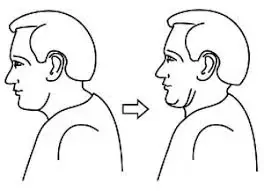
Neck rotations
- You can Sit or stand facing forward.
- Breathe out and slowly turn your head to the right side, keeping your shoulders relaxed and down.
- Breathe in and return to the center.
- Breathe out and turn to look over your left side shoulder.
- Do 10 rotations on each side.
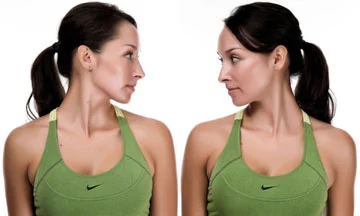
Head tilts
- You can Sit or stand facing forward.
- Breathe out as you slowly tilt your right ear down toward the shoulder.
- You can use your right hand to apply gentle pressure to your head to deepen the stretching.
- Hold for a few breaths, feeling the stretch on the side of the neck down to the collarbone.
- On a Breath out, return to the beginning position.
- Repeat on the opposite side also.
- Do 10 tilts on each side.
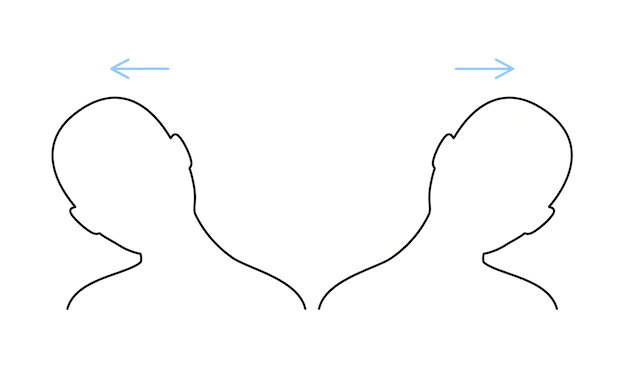
Neck flexion and extension exercise
- Start with the sitting position.
- Slowly bend your neck forward and then gaze up toward the ceiling.
- You can hold this position for 5 to 10 seconds.
- Do 5 to 10 repetitions.
Isometric Neck Exercise
- Isometric neck exercise helps to strengthen your neck muscles. This exercise is mostly recommended by Physiotherapists from day one to relieve your Neck pain.
- How to perform this exercise :
- In a sitting position, keep your body straight, Put your both hands behind the neck (as seen in the images), and try your neck to push pressure on your hands and the same time Resist your neck muscles, both hands should maintain align position for 4 to 5 seconds and then relax.
- The first day does 8 repetitions and the second day does 10 repetitions. Do some exercise on your forehead and each side of the neck.
- Do the exercise by pressing on the side of your head. Repeat 8 times, then alter sides.
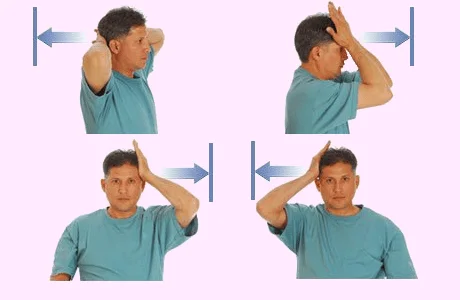
Prone Cobra
- This exercise is done lying face down on the ground and uses gravity as resistance in the reinforcing process.
- Lying face down, put the forehead on the rolled-up hand towel for comfort.
- Place the arms at the side, palms down on the floor.
- Place your tongue on the roof of the mouth
- Pinch the shoulder blades together and lift the hands from the ground.
- Roll the elbows in, palms out, and thumbs upward.
- Gently lift the forehead about an inch from the towel keeping the eyes looking straight at the ground
- Hold the position for 10 seconds.
- Perform 10 repetitions.

Shrug
- How to do it?
- Simple shrugs exercise is another exercise to keep your neck muscle strength. The shrug is common and easy to implement, and it is one of the very good exercises to activate the neck muscle. For more challenges, you can do this exercise with some weights like dumbbells in your hands.
- For the Shrug exercise, The patient’s position is Stand straight with good posture.
- Then raise your shoulder as high as you can get them towards your ears with a shoulder.
- Hold for a count of 2 to 5.
- Release them back into their beginning positions.
- Repeat 20 to 30 times.

Back Burn
Backburn exercise is another major postural exercise. This exercise is conducted against the wide flat wall with the back and the feet about 4 inches from the bottom of the wall.
Start, with the back of the head against the wall, the same posture as the chin tuck exercise.
Only try flattening your lower back against a wall.
With wrists about shoulder height, place the elbows, forearms, and the backs of the hands and fingers on a wall.
Then slowly slide the hands above the head and back down, holding the arms, hands, head, and fingertips still touching the wall as best as possible.
Repeat this 10 times, 3 to 5 sets per day.
Stretching exercise
Chin Tucks
- Chin tucks or cervical retractions are an absolute must for anyone with neck muscle pain. They help to realign the neck and ease the tension from the upper trapezius, combat a forward poking chin posture and loosen joints in the lower neck and the upper back also.
- The patient’s position is to Sit or stand upright in a good posture
- Slowly and gently draw your chin inward towards your neck without tilting your head
- To ensure the technique is correct, imagine your chin is sitting on a shelf and you are sliding your chin in along with the shelf – it should feel like you are giving yourself the double chin
- Hold for 3 seconds and then relax. Repeat 10 to 15
- Top Tips:
- a. Imagine the piece of string pulling up through the center of your head, drawing your head upwards throughout, and keeping the back of your neck long so you do not let your head tilt.
- b. It can really help you to do chin tucks in front of the mirror when you start first. The movement often feels a little unnatural to start with and people often find themselves tilting their heads or drawing their shoulders back instead of just tucking the chin in.

Shoulder Rolls
- Shoulder rolls are a great place to start with neck muscle stretches as they help get the muscle warmed up and loose before you start full-on stretches, making them more effective
- Shoulder rolls: a great warm-up with neck muscle stretches
- The patient’s position is to Sit or stand in a comfortable position with a good posture
- Then Roll both shoulders back and down and then forward and up in a circular motion
- You can begin with small circles and gradually make the circles bigger
- Spend 30 to 60 seconds doing this and then repeat in the opposite direction
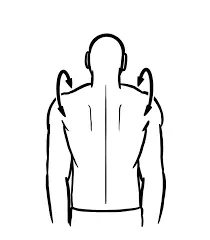
Side Bends
- Side bends are one of the best neck muscle stretches to start with for releasing chronically tight neck muscles. They can be modified to target different areas of the muscle and work well to relieve the trigger points and knots. You want to start gently with these head tilts – do not be tempted to over-stretch too quickly else you might get some discomfort in your neck.
- The patient’s position is to Sit upright in the chair ensuring good posture
- You have to Tilt your head to one side, taking your ear down towards the shoulder
- Keep your eyes and nose pointed forwards
- You can hold for 3 seconds and return to the beginning position
- Repeat to the other side, aiming for 10 to 15 reps on each side
- Progression: You can increase the stretch slightly further in muscle by placing your hand behind your back as shown before you start and keep it there throughout
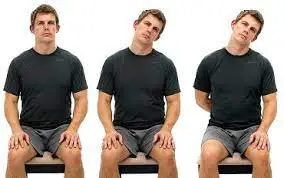
SCM stretch
- How to do this stretch
- Tuck your chin inward and downward.
- Tilt your head to the right side.
- Then you have to Place your right hand on the left side of the head.
- Give downward pressure.
- Now Gently turn your head to the left side.
- You can feel the firm stretch in the left Sternocleidomastoid muscle.
- Hold this stretch for 30 seconds.
- Repeat on the left side.
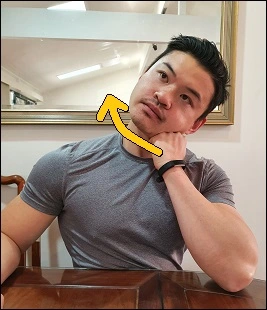
Neck rotations
- You can Sit or stand facing forward.
- Breathe out and slowly turn your head to the right side, keeping your shoulders relaxed and down.
- Breathe in and return to the center.
- Breathe out and turn to look over your left side shoulder.
- Do 10 rotations on each side.

Neck flexion and extension exercise
- Start with the sitting position.
- Slowly bend your neck forward and then gaze up toward the ceiling.
- You can hold this position for 5 to 10 seconds.
- Do 5 to 10 repetitions.
Head tilts
- You can Sit or stand facing forward.
- Breathe out as you slowly tilt your right ear down toward the shoulder.
- You can use your right hand to apply gentle pressure to your head to deepen the stretching.
- Hold for a few breaths, feeling the stretch on the side of the neck down to the collarbone.
- On a Breath out, return to the beginning position.
- Repeat on the opposite side also.
- Do 10 tilts on each side.

Safety and precautions
- Never perform neck workouts without learning the proper technique from an experienced trainer or physical therapist. This will help you to avoid injuries and soreness of neck muscles.
- Give your neck muscles reasonable targets and never try to achieve so much fast. Start with slows and builds upon the sets and repetitions.
- Listen to your body. If you feel pain during neck exercise, stop doing it immediately and consult your physical therapist or trainer.
- Start your neck workout fitness plan only after discussing it with your physical therapist. This is especially necessary for patients who have some past health problems or are on some comorbidity.
- Always do neck muscle stretching before and after your strengthening training. This will help you to improve your circulation and warm your muscles before the neck muscles work out.
- Even the best neck muscle exercises would not work if you do not use the equipment properly. This will prevent strains and injuries to the neck muscle.
When did you not do this exercise?
- When you are already suffering from neck and shoulder pain then avoid doing this exercise.
- When your healthcare provider has advised you of the rest.
- When you feel any neck or shoulder pain while this exercise then stop immediately.
- When you are suffering from pain in the back then avoid weight-lifting exercises.
- When your arm bone is recently fractured.
- When you recently feel any cervical-related problems.
Neck exercises at home
Head tilt
You can Sit or stand facing forward. Breathe out as you slowly tilt your right ear down toward the shoulder. You can use your right hand to apply gentle pressure to your head to deepen the stretching. Hold for a few breaths, feeling the stretch on the side of the neck down to the collarbone. On a Breath out, return to the beginning position. Repeat on the opposite side also.
Do 10 tilts on each side.
Chin Tucks
Chin tucks or cervical retractions are an absolute must for anyone with neck muscle pain. They help to realign the neck and ease the tension from the upper trapezius, combat a forward poking chin posture and loosen joints in the lower neck and the upper back also. The patient’s position is to Sit or stand upright in a good posture Slowly and gently draw your chin inward towards your neck without tilting your head To ensure the technique is correct, imagine your chin is sitting on a shelf and you are sliding your chin in along with the shelf – it should feel like you are giving yourself the double chin. Hold for 3 seconds and then relax. Repeat 10 to 15
Top Tips:
a. Imagine the piece of string pulling up through the center of your head, drawing your head upwards throughout, and keeping the back of your neck long so you do not let your head tilt.
b. It can really help you to do chin tucks in front of the mirror when you start first. The movement often feels a little unnatural to start with and people often find themselves tilting their heads or drawing their shoulders back instead of just tucking the chin in.
Isometric Neck Exercise:
Isometric neck exercise helps to strengthen your neck muscles. This exercise is mostly recommended by Physiotherapists from day one to relieve your Neck pain. to perform this exercise: In a sitting position, keep your body straight, Put your both hands behind the neck (as seen in the images), and try your neck to push pressure on your hands and the same time Resist your neck muscles, both hands should maintain align position for 4 to 5 seconds and then relax. The first day does 8 repetitions and the second day does 10 repetitions. Do some exercise on your forehead and each side of the neck. Do the exercise by pressing on the side of your head. Repeat 8 times, then alter sides.
Neck exercises gym
Shrug
How to do it?
Simple shrugs exercise is another exercise to keep your neck muscle strength. The shrug is common and easy to implement, and it is one of the very good exercises to activate the neck muscle. For more challenges, you can do this exercise with some weights like dumbbells in your hands. For the Shrug exercise, The patient’s position is Stand straight with good posture. Then raise your shoulder as high as you can get them towards your ears with a shoulder. Hold for a count of 2 to 5. Release them back into their beginning positions. Repeat 20 to 30 times.
Neck exercises bodybuilding
Neck curl up
Bring your chin to your chest and then lift your head from the ground about 2 inches
Begins by doing 3 sets for 10 repetitions and gradually builds up to more.
You can take your time because these muscles are often underdeveloped and can cause neck strain if you try too much too fast.
Neck exercises for muscle Gain
Dumbbell shrug
Reverse flye
Shoulder shrug
Power shrug
Push press
Bent over two-dumbbell row
Best neck exercises
Chin Tucks
Chin tucks or cervical retractions are an absolute must for anyone with neck muscle pain. They help to realign the neck and ease the tension from the upper trapezius, combat a forward poking chin posture and loosen joints in the lower neck and the upper back also. The patient’s position is to Sit or stand upright in a good posture Slowly and gently draw your chin inward towards your neck without tilting your head To ensure the technique is correct, imagine your chin is sitting on a shelf and you are sliding your chin in along with the shelf – it should feel like you are giving yourself the double chin. Hold for 3 seconds and then relax. Repeat 10 to 15
Top Tips:
a. Imagine the piece of string pulling up through the center of your head, drawing your head upwards throughout, and keeping the back of your neck long so you do not let your head tilt.
b. It can really help you to do chin tucks in front of the mirror when you start first. The movement often feels a little unnatural to start with and people often find themselves tilting their heads or drawing their shoulders back instead of just tucking the chin in.
Head tilt
You can Sit or stand facing forward. Breathe out as you slowly tilt your right ear down toward the shoulder. You can use your right hand to apply gentle pressure to your head to deepen the stretching. Hold for a few breaths, feeling the stretch on the side of the neck down to the collarbone. On a Breath out, return to the beginning position. Repeat on the opposite side also.
Do 10 tilts on each side.
FAQ
Training your neck is much like training any other part of the body. When you are a beginner, you should start with small. Two to three times a week with rest days in between is a great place to begin. If your goal is to build the endurance of the neck, training the neck five times a week is a better goal.
Neck curl up: Bring your chin to your chest and then lift your head from the ground about 2 inches. Begins by doing 3 sets for 10 repetitions and gradually builds up to more. You can take your time because these muscles are often underdeveloped and can cause neck strain if you try too much too fast.
Chin Tucks: Chin tucks or cervical retractions are an absolute must for anyone with neck muscle pain. They help to realign the neck and ease the tension from the upper trapezius, combat a forward poking chin posture and loosen joints in the lower neck and the upper back also. The patient’s position is to Sit or stand upright in a good posture Slowly and gently draw your chin inward towards your neck without tilting your head To ensure the technique is correct, imagine your chin is sitting on a shelf and you are sliding your chin in along with the shelf – it should feel like you are giving yourself the double chin. Hold for 3 seconds and then relax. Repeat 10 to 15
Top Tips: a. Imagine the piece of string pulling up through the center of your head, drawing your head upwards throughout, and keeping the back of your neck long so you do not let your head tilt. b. It can really help you to do chin tucks in front of the mirror when you start first. The movement often feels a little unnatural to start with and people often find themselves tilting their heads or drawing their shoulders back instead of just tucking the chin in. The second exercise is the Isometric Neck Exercise: Isometric neck exercise helps to strengthen your neck muscles. This exercise is mostly recommended by Physiotherapists from day one to relieve your Neck pain. to perform this exercise: In a sitting position, keep your body straight, Put your hands behind the neck (as seen in the images), and try your neck to push pressure on your hands and the same time Resist your neck muscles, both hands should maintain align position for 4 to 5 seconds and then relax. The first day does 8 repetitions and the second day does 10 repetitions. Do some exercise on your forehead and each side of the neck. Do the exercise by pressing on the side of your head. Repeat 8 times, then alter sides.
Head tilt: You can Sit or stand facing forward. Breathe out as you slowly tilt your right ear down toward the shoulder. You can use your right hand to apply gentle pressure to your head to deepen the stretching. Hold for a few breaths, feeling the stretch on the side of the neck down to the collarbone. On a Breath out, return to the beginning position. Repeat on the opposite side also.
Do 10 tilts on each side.


